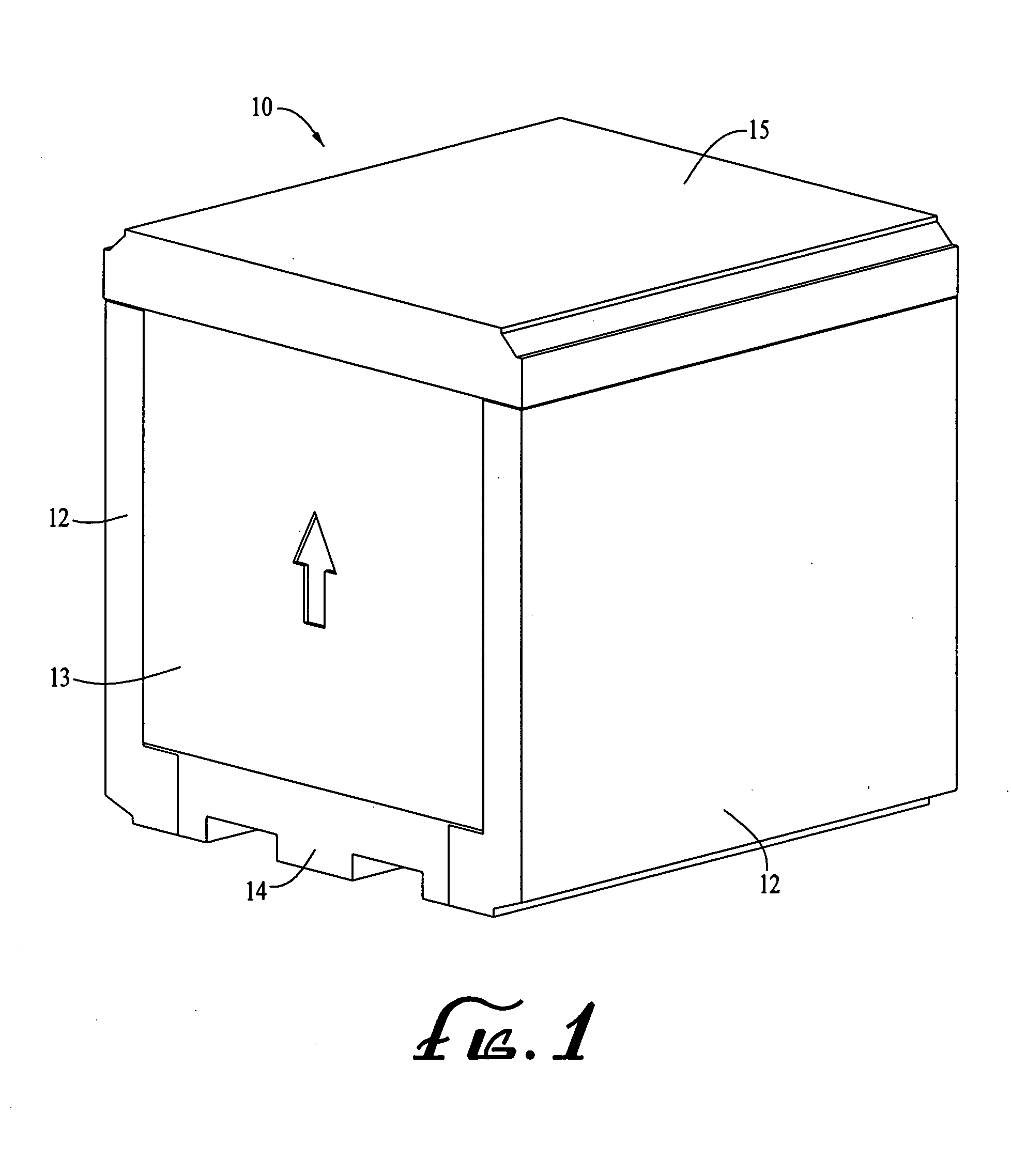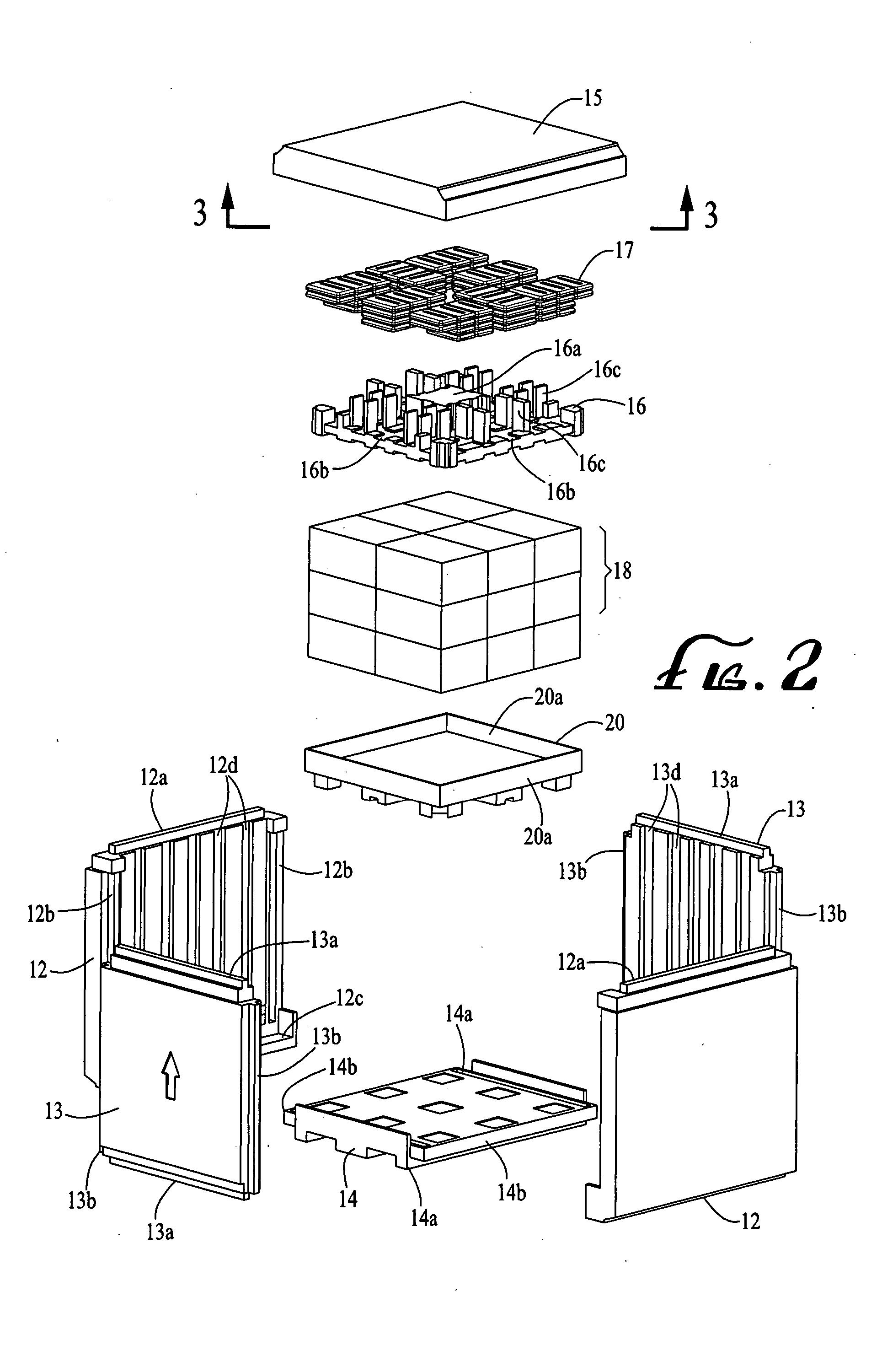Insulated shipping containers
a technology for shipping containers and containers, applied in the field of shipping containers, can solve the problems of shortening the time that the container can maintain a refrigerated condition, creating temperature gradients or zones, and many problems of conventional insulated shipping containers, so as to reduce the temperature gradient, reduce the temperature, and improve the effect of temperature control
- Summary
- Abstract
- Description
- Claims
- Application Information
AI Technical Summary
Benefits of technology
Problems solved by technology
Method used
Image
Examples
Embodiment Construction
[0018] Turning now to the drawings, FIG. 1 illustrates one embodiment of an insulated container 10 according to the present invention. It preferably is constructed of water-based rigid polyurethane foam with sides 12, back of front 13, bottom 14 and lid or top 15 all with an interlocking design for easy storage and assembly, and, for reduction of convection.
[0019] Turning to the exploded view of FIG. 2, a temperature range, for example, of 0° C. to 10° C. can be maintained by the use of an upper ice tray 16 to hold the necessary coolant 17 for the product load 18 in the container. The tray 16 can preferably be slid in on top of the product 18. An internal product tray 20 with built up sides 20a can be provided to insulate the bottom of the product load 18 from the bottom or base 14 and reduce the temperature gradient within the container. The bottom 14 of the container can include forklift grooves molded into the bottom thereof for eliminating the need for a separate wooden pallet....
PUM
 Login to View More
Login to View More Abstract
Description
Claims
Application Information
 Login to View More
Login to View More - R&D
- Intellectual Property
- Life Sciences
- Materials
- Tech Scout
- Unparalleled Data Quality
- Higher Quality Content
- 60% Fewer Hallucinations
Browse by: Latest US Patents, China's latest patents, Technical Efficacy Thesaurus, Application Domain, Technology Topic, Popular Technical Reports.
© 2025 PatSnap. All rights reserved.Legal|Privacy policy|Modern Slavery Act Transparency Statement|Sitemap|About US| Contact US: help@patsnap.com



